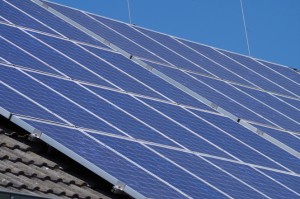Houses are engineering marvels. They have to be. Habitat has evolved through the years, adjusting to the weather and climate, as well as with improved developments in engineering. This is another reason why installing a commercial or residential solar design involves more than meets the eye.

There are a lot of things that a house is supposed to do. Primarily a house is a shelter against the weather and climate. As houses developed in unique regions, they also became different. Mediterranean style homes, for instance, have a lot in common with Pueblo Indian residences. This is due to their flat roof which also serves as an open-air terrace. The materials used were both from mortar or clay. The houses were made to withstand the heat and the desert conditions.
In Northern Europe, and in the Alps, the houses had steep roofs, and seldom had eaves gutters. The heavier the snow in the area, the steeper the roof. This ensured that heavy snow would fall off the roof and minimize the weight per square foot that accumulated. The steep angle of the roof also helps the stability of the building to ensure that the roof does not cave into the house’s living quarters.
In the same manner, current housing is engineered with snow loads and wind loads. The roof are angled with the region’s winter conditions in mind. For areas with hurricanes, tornadoes and typhoons, the wind load is also calculated. The roofs are engineered to minimize damage during strong winds. The addition of a solar panel changes the math for these environmentally related problems.
All of those considerations are just to build the house. Now, repeat a similar process when a solar design is to be installed. Snow and wind loads have to be calculated considering the weight and shape of the solar panel and the tubes and pipes that are connected. These calculations have to take into consideration the extra weight of the panels on the home, and the weight and pressure to be from snow and the wind on the solar panels themselves.
As an assurance to homeowners, solar design installation companies have to receive solar permitting and solar feasibility studies to ensure a solar design that will not only bring a return on your investment but will provide years of safe operation, too. Solar engineering companies, like DBM Solar, consult with installation companies to ensure that the PV design that is to be installed meets a variety of benchmarks.
- snow load
- wind load
- city regulations
- county regulations
- state regulations
- federal regulations

